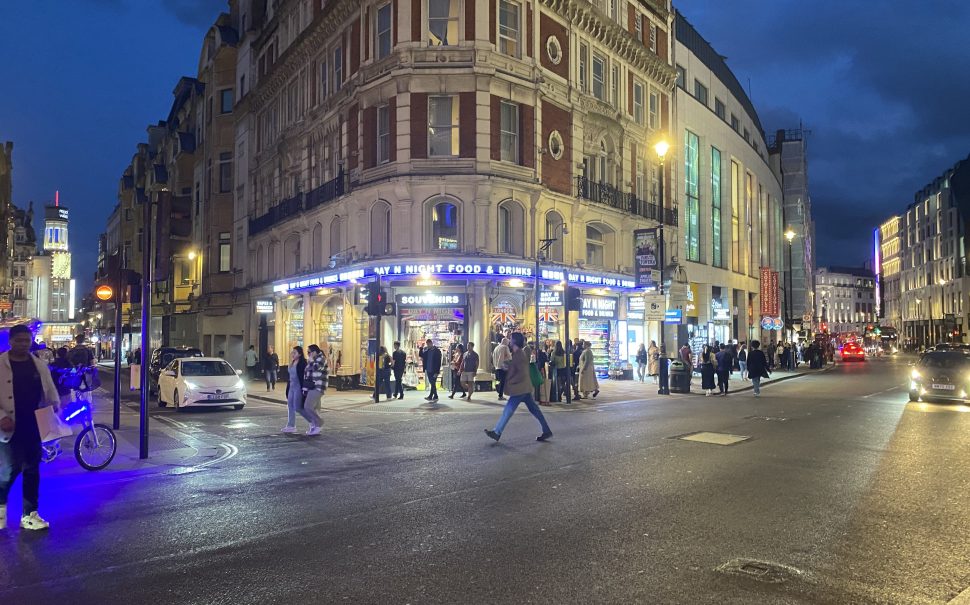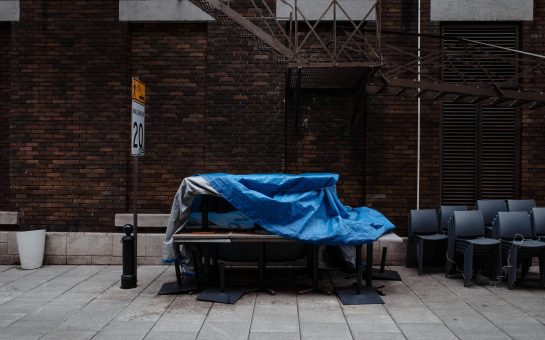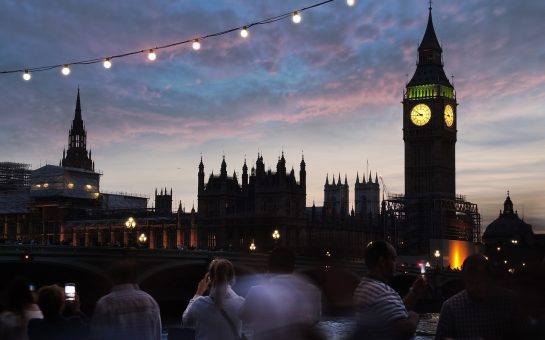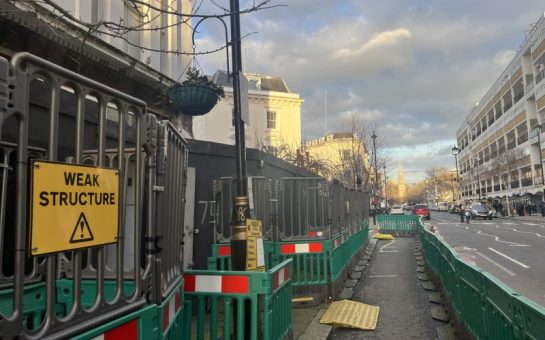In the cloistered chamber of the House of Commons, legislation is currently being drafted to clamp down on violent crime against retail workers.
Just 1.5 miles down the road sits the iconic Oxford Street, an epicentre of retail crime amongst the two London wards with the highest rates of shoplifting, non-residential burglary and violence — the West End and St James’.
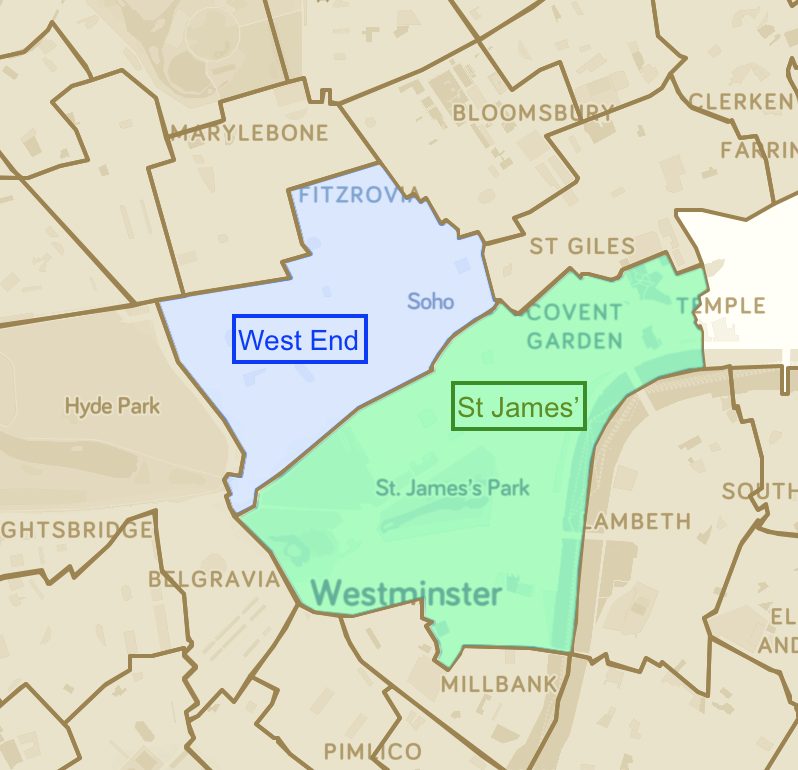
The small West End ward alone saw over 52,000 reported theft offences in 2023, affecting residents, business owners and visitors alike.
Neatly summarising the pain felt in the area, Councillor Patrick Lilley, a Labour councillor in the West End ward, said: “Why do people come to the West End to steal? Because that’s where they go to shop.”
The impact on victims
Speak to ordinary retailers, from pharmacists in Fitzrovia to sex shops in Soho, and you’ll hear ample stories of theft and assault.
Lilley said: “I’ve been contacted by shopkeepers in the West End ward and beyond about retail crime, and it’s heartbreaking.
“It’s really shocking when you speak to a pharmacist, who’s there to do good, and people are ransacking their shop, stealing the most expensive things and running off.”
Alongside the wealth of small community businesses and iconic shopping, the West End is home to a vibrant nightlife, the centre of the UK’s theatre scene, and the LGBTQ+ hub of Soho.
Shops representing minority groups face the threat of theft alongside hate crimes, as Lilley highlighted.
He added: “Our wonderful gay shops, that contribute so much to the colour of the area along with the gay bars, have also been targeted for aggressive, I’d say hateful or homophobic or transphobic, incidents.”
Westminster’s dark underbelly
The intersection of theft and violence in the West End is just a microcosm in the wider campaign from groups like the British Retail Consortium (BRC), Association of Convenience Stores (ACS), and Coop Group to draw attention to the physical threats felt by retail workers.
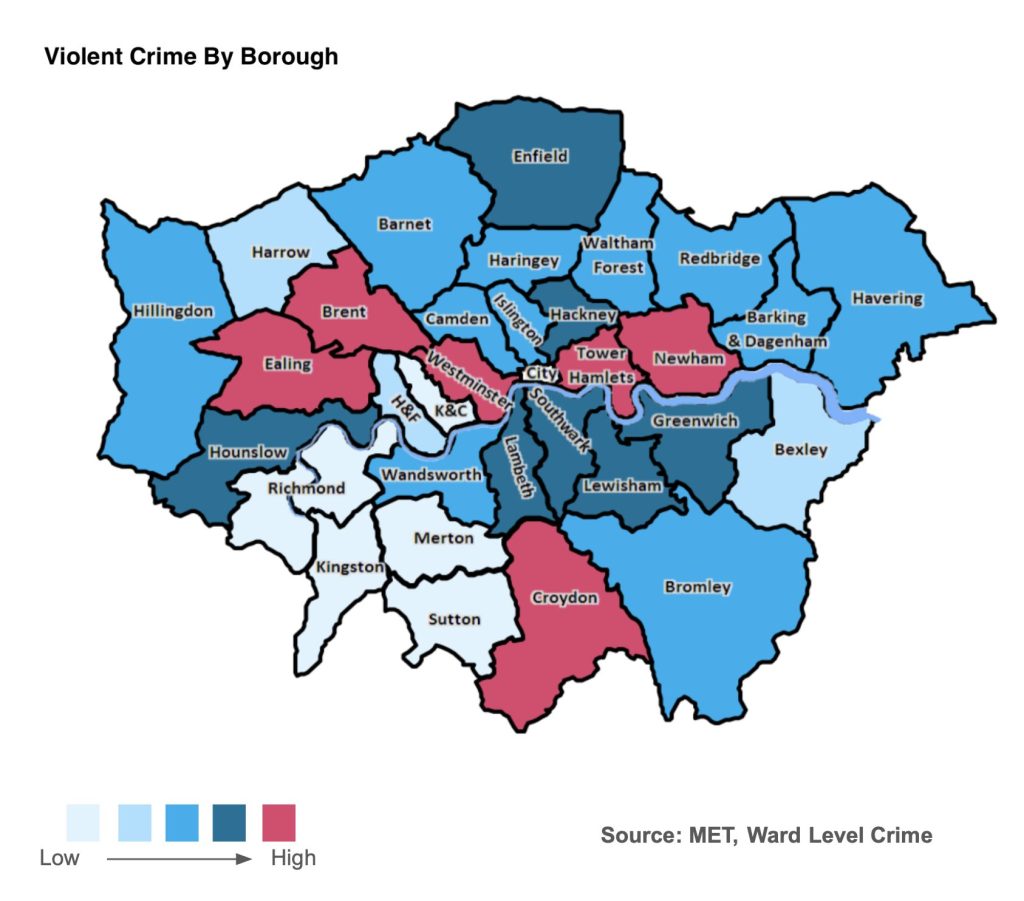
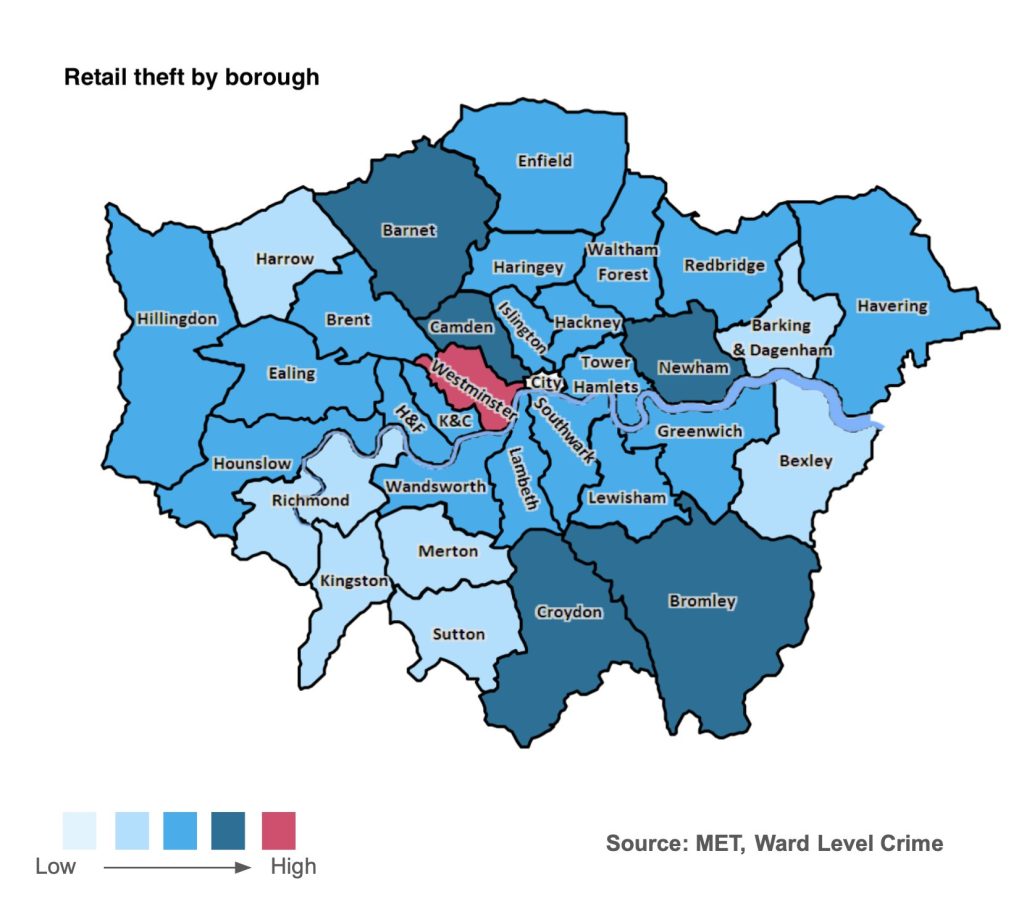
The Westminster borough feels this intersection more than most, having both the highest rates of violent crime and retail theft in 2023.
High crime rates in Westminster are somewhat unavoidable due to the high footfall in the area, as a Westminster City Council spokesperson said: “With around one million people coming into the City of Westminster every day, policing the streets and keeping the public safe is a 24/7 operation.”
However, there is a clear issue predominantly with theft from the person and shoplifting, placing a heightened burden on West End businesses.
As footfall rises, crime’s foothold tightens
Across the nation, British retailers have fallen on hard times.
Set against a macro-trend of high street decline, the past five years have brought significant disruption.
The formalisation of Brexit in 2019 closed the borders to essential consumer goods, the Covid pandemic of 2020 saw retailers take on a frontline role and the recession and cost-of-living crisis have afflicted consumer pockets and retailers’ resilience alike.
While the easing of lockdowns has reopened retailers to the public, the recession presents new challenges.
According to the Association of Convenience Stores (ACS) 2024 report, two-thirds of retailers believe the cost of living crisis has led to an increase in theft, as consumers become desperate.
Crimes born of desperation due to addiction, homelessness and poverty, alongside opportunistic petty theft like failing to scan expensive items on self checkout tills, does add up.
But more concerning are the high rates of repeated targeted shoplifting and organised crime.
At this point, retail crime stretches beyond monetary losses and begins to result in violent assaults and hate crimes.
Sadly, the prosecution rates for retail crime are shockingly low and the custodial sentences are little more than a slap on the wrist.
According to the British Retail Consortium (BRC), just 8% of reported retail crimes in 2023 resulted in a prosecution with only 4% ending in a conviction.
As a National Police Chiefs’ Council spokesperson identified: “Retail crime can have a significant impact on victims which is why we are committed to doing all we can to reduce thefts and pursue offenders, especially those prolific and habitual offenders, who cause misery within the community.”
In response to these rises, retailers have continuously invested in increased security, from staffing security guards on their doors to equipping staff with body cameras.
Despite an all-time-high investment of more than a billion pounds by British retailers in crime prevention measures in 2023, it hasn’t been enough to curtail retail crime or offset the surging losses from theft and damages.
While there is a national trend of rising retail crime against a backdrop of economic uncertainty, the pain has not been felt equally.
Tesco, the UK’s biggest supermarket chain, can afford to invest £44m over the last four years in crime prevention measures and protection for its staff, but small businesses can’t keep up.
And while the leafy borough of Richmond may only be dealing with the occasional petty theft, others like Westminster face targeted organised crime.
From Covent Garden market to late-night convenience stores: how will Westminster support its businesses?
While national changes in legislation are bringing in the necessary protection for retail workers in terms of prosecution, the prevention of retail crime has to be dealt with locally.
The Met Police stated: “Our New Met for London Plan is involving Londoners to give them a say in how their areas are policed.
“As part of this work we are collaborating with business and retail leads right across London to identify what matters to them, including the safety of shop based workers and shoplifting.”
To combat challenges in the borough, Westminster Council have stepped up to provide community-first schemes that span policing, business partnerships and planning design.
As part of the £1 billion investment in Oxford Street and with funding from the Community Infrastructure Levy, Westminster Council is working to implement more CCTV across the area.
While current CCTV coverage is strong, it’s usually at street-light level, meaning it only helps with tracing criminal movement rather than identifying offenders.
In collaboration with the Soho Business Alliance, Councillor Lilley is now working to have cameras installed at head height across retailers in the West End ward.
The council is also well aware that retail crime heavily intersects with night-crime, which has prompted the new Westminster After Dark initiative.
A council spokesperson added: “We are also speaking to members of the community through the Westminster Dark consultation to shape our upcoming Evening and Night-time plan as well. By working together, we can make sure Westminster is safer place to live, work, and visit.”
